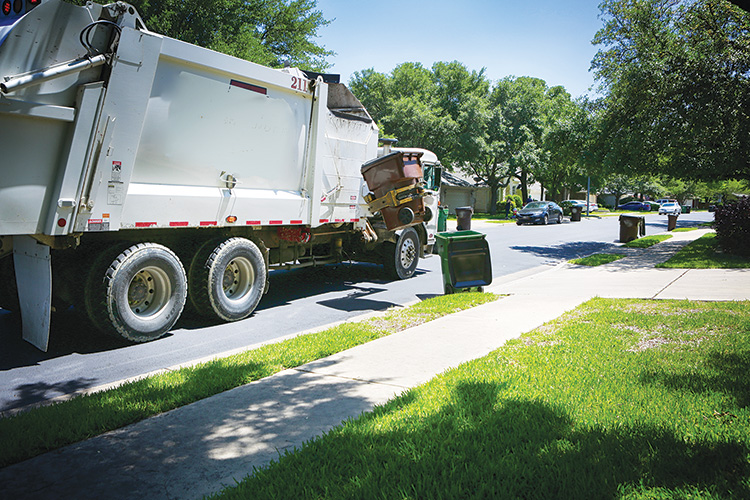An efficient daily route plan starts with quality customer information and accurate street data.
By Jessica Cearfoss
Whether it is waste and recycling collection for residential or commercial service, an efficient route plan will save you money and time, make your neighborhoods cleaner, and reduce accidents and injuries.
But how do you get started? The key is to embrace a digital strategy as a strategic business process. That includes committing to route planning and optimization, and the investment and building of relationships with key stakeholders.

Set Measurable Goals
Prior to achieving success in a strategic routing project or daily route adjustments, you need to set measurable goals. This starts by setting key performance indicators, or KPIs, which will be used to determine the value of your route optimization strategy. Some KPIs to promote a successful route planning project include:
• Reducing the number of vehicles on the road
• Improving customer satisfaction
• Reducing route planning time
• Decreasing accidents and injuries
• Saving money on fuel
• Reducing or eliminating the amount of overtime paid
Prioritizing projects with the greatest potential return on investment is key to success, as is the roll-out strategy. You will want to pilot the routing project in a small region before applying it to broader projects.
Organizations that have experienced success in one area of operations have applied the same strategy to other areas, such as optimizing residential route plans, and then moving to commercial routes, or even street sweeping, inspection routes, and other public works functions.

Refine Your Customer Data to Achieve Success
Accurate customer data forms the foundation of a successful route planning project. Without it, you will most certainly fail. Information, including street address, city, state, and postal code, need to be accurate and complete so your route planning partner can correctly locate the customers in your service area.
You need a route planning solution that uses commercially available street data, traffic patterns, and other real-time information from well-respected street data providers. That way, your team can rely on their maps and services to create a route optimization database using the customer information that you provide.
Quality customer information also supports in-cab navigation devices and service verification technologies. Early in the route planning process, arrange meetings between your solutions provider and your information technology or operations staff to discuss requirements to ensure systems can integrate seamlessly. In addition to customer address information, you will need operations data specific to collection volumes and time-of-service restrictions.
Choose a Provider with an Open-Architecture Structure
As a waste hauler, your most-prized digital asset is your customer information. You cannot effectively manage your collection operations and ensure vehicle assets are optimized without it. The last thing you need is for that critical information to be locked down.
However, some solutions providers in the waste industry restrict the exchange of information to and from their platforms. This limits your options to implement best-of-breed technology solutions in specific areas.
Selecting a back-office systems provider is an important decision for your business. It is crucial to choose a solutions provider who embraces an accessible technology platform structure. A vehicle route planning partner who has an open-architecture structure will allow you to easily integrate with numerous technology solutions providers in the waste industry. The increased flexibility—not to mention peace of mind—will allow you to deploy the best-in-class route planning and optimization solutions while leveraging other necessary business technology systems.
Cooperation and ease of integration with a powerful suite of vehicle routing solutions enables your organization to operate at peak collection operations effectiveness. Look for a partner with technology efficiency who will never be the roadblock to digital productivity.

Benchmark your success
In order to track the value of your efforts, it is important to have a standard measure of success. Route planning is a commitment that needs to be made as you move to a more digitized environment for daily operations, and as the industry becomes more competitive. It is crucial that you integrate and maintain the highest-quality data to operate at peak efficiency. | WA
Jessica Cearfoss, Senior Business Development Manager for RouteSmart Technologies, is an expert in public works route planning and optimization solutions. She helps environmental service companies and organizations understand route optimization and RouteSmart solutions can leverage their customer information to achieve their performance goals. She also conducts demonstrations for their suite of software products targeted to the public works sector, including RouteSmart for ArcGIS, RouteSmart Navigator and RouteSmart Online. Jessica can be reached at [email protected].
